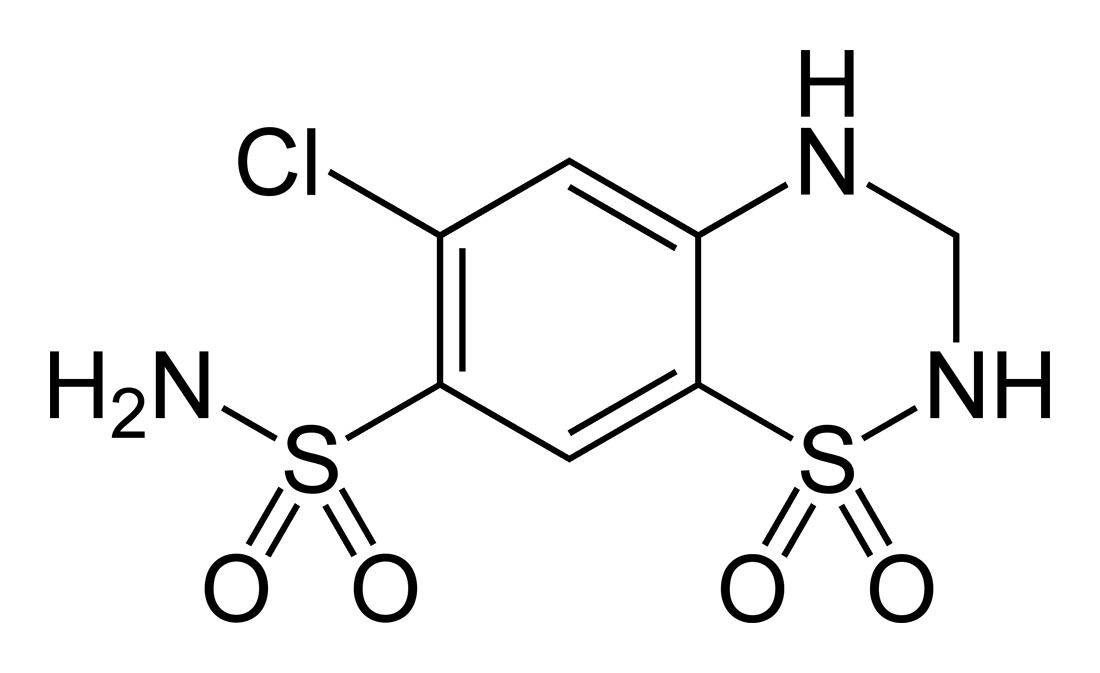|
Succinylsulfathiazole
Succinylsulfathiazole (also known as sulfasuxidine) is a sulfonamide. It is also spelled as succinylsulphathiazole. It is a white or yellow-white crystalline powder. It dissolves in aqueous solutions of alkali hydroxides and carbonates but is very slightly soluble in water. It is classified as ultra long-acting drug. About 95% of the drug remains in the intestine and only 5% is hydrolyzed, slowly, to sulfathiazole and is absorbed. The drug is used for its antibacterial activity in the GIT. The dose is 10g - 20g daily in divided doses. The Succinyl group is attached to form a prodrug for the controlled release Modified-release dosage is a mechanism that (in contrast to immediate-release dosage) delivers a drug with a delay after its administration (delayed-release dosage) or for a prolonged period of time (extended-release R, XR, XLdosage) or to a sp ... of the drug sulfathiazole. References 2-Thiazolyl compounds Sulfonamide antibiotics Anilides {{gastrointest ... [...More Info...] [...Related Items...] OR: [Wikipedia] [Google] [Baidu] |
Sulfonamide (medicine)
Sulfonamide is a functional group (a part of a molecule) that is the basis of several groups of drugs, which are called sulphonamides, sulfa drugs or sulpha drugs. The original antibacterial sulfonamides are synthetic (nonantibiotic) antimicrobial agents that contain the sulfonamide group. Some sulfonamides are also devoid of antibacterial activity, e.g., the anticonvulsant sultiame. The sulfonylureas and thiazide diuretics are newer drug groups based upon the antibacterial sulfonamides. Allergies to sulfonamides are common. The overall incidence of adverse drug reactions to sulfa antibiotics is approximately 3%, close to penicillin; hence medications containing sulfonamides are prescribed carefully. Sulfonamide drugs were the first broadly effective antibacterials to be used systemically, and paved the way for the antibiotic revolution in medicine. Function In bacteria, antibacterial sulfonamides act as competitive inhibitors of the enzyme dihydropteroate synthase (DHP ... [...More Info...] [...Related Items...] OR: [Wikipedia] [Google] [Baidu] |
Sulfathiazole
Sulfathiazole is an organosulfur compound used as a short-acting sulfa drug. Formerly, it was a common oral and topical antimicrobial, until less toxic alternatives were discovered. Sulfathiazole exists in various forms ( polymorphs). The imine tautomer is dominant, at least in the solid state. In this tautomer, the proton resides on the ring nitrogen. Cultural references * In the 1955 short story, Captive Audience by Philip K. Dick, Flannery recommends the use of sulfathiazole in lieu of the unavailable Penicillin for a ten year old boy's suppurating arm wound he received from "toxic crystalline poisoning". * 1960 Otto Preminger's movie Exodus, American nurse Kitty Fremont tells Dr. Odenheimer that sulfathiazole is the treatment for impetigo. Dr. Odenheimer tells her that sulfathiazole is not available on the ship; soaking of the lesions and exposure to sunlight "is also a cure." * 1963: Sulfathiazole is mentioned in Kurt Vonnegut's novel ''Cat's Cradle'' and New Dictionary, ... [...More Info...] [...Related Items...] OR: [Wikipedia] [Google] [Baidu] |
Prodrug
A prodrug is a medication or compound that, after intake, is metabolized (i.e., converted within the body) into a pharmacologically active drug. Instead of administering a drug directly, a corresponding prodrug can be used to improve how the drug is absorbed, distributed, metabolized, and excreted (ADME). Prodrugs are often designed to improve bioavailability when a drug itself is poorly absorbed from the gastrointestinal tract. A prodrug may be used to improve how selectively the drug interacts with cells or processes that are not its intended target. This reduces adverse or unintended effects of a drug, especially important in treatments like chemotherapy, which can have severe unintended and undesirable side effects. History Many herbal extracts historically used in medicine contain glycosides (sugar derivatives) of the active agent, which are hydrolyzed in the intestines to release the active and more bioavailable aglycone. For example, salicin is a β-D-glucopyranosid ... [...More Info...] [...Related Items...] OR: [Wikipedia] [Google] [Baidu] |
Modified-release Dosage
Modified-release dosage is a mechanism that (in contrast to immediate-release dose (biochemistry), dosage) delivers a drug with a delay after its route of administration, administration (delayed-release dosage) or for a prolonged period of time (extended-release [ER, XR, XL] dosage) or to a specific target in the body (targeted-release dosage).Pharmaceutics: Drug Delivery and Targeting p. 7-13 Sustained-release dosage forms are dosage forms designed to liberation (pharmacology), release (liberate) a drug at a predetermined rate in order to maintain a constant drug concentration for a specific period of time with minimum side effects. This can be achieved through a variety of formulations, including liposomes and drug-polymer conjug ... [...More Info...] [...Related Items...] OR: [Wikipedia] [Google] [Baidu] |
Sulfonamide Antibiotics
Sulfonamide is a functional group (a part of a molecule) that is the basis of several groups of drugs, which are called sulphonamides, sulfa drugs or sulpha drugs. The original antibacterial sulfonamides are synthetic (nonantibiotic) antimicrobial agents that contain the sulfonamide group. Some sulfonamides are also devoid of antibacterial activity, e.g., the anticonvulsant sultiame. The sulfonylureas and thiazide diuretics are newer drug groups based upon the antibacterial sulfonamides. Allergies to sulfonamides are common. The overall incidence of adverse drug reactions to sulfa antibiotics is approximately 3%, close to penicillin; hence medications containing sulfonamides are prescribed carefully. Sulfonamide drugs were the first broadly effective antibacterials to be used systemically, and paved the way for the antibiotic revolution in medicine. Function In bacteria, antibacterial sulfonamides act as competitive inhibitors of the enzyme dihydropteroate synthase (DH ... [...More Info...] [...Related Items...] OR: [Wikipedia] [Google] [Baidu] |


